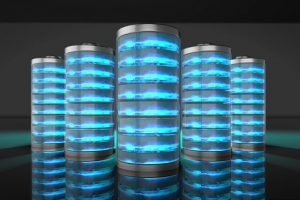Science and scientists are revolutionary subjects copulating to make human sustenance easier and comforting. Non-renewable resources in the nature are exhausting, so the only viable alternative to man are the renewable inexhaustible ones. A range of new products have been tested, approved and launched through the decades while another set is up for the same process of introduction in decades to come.
It is an unending stream of advancement in technology.
One of the remarkable inventions of men are batteries that are used to power different plants, motors and petty day-to-day mechanics. Batteries are in the verge of a power revolution because though the Li-ion batteries have been in use to mankind for a long while now yet it has certain limitations. The operating systems and chips are also working on saving power by stabilizing the devices for a lasting and efficient working without having to charge it periodically. Electric Vehicles (EVs) must have an adequate ‘range anxiety’, or an installed EV base of 100 million can do the needed for an improved and significant upgrade on batteries.

Lithium-ion batteries are the latest EVs but they come with impediments of short life cycles and overheating, so to formulate a better upgrade than the former, a higher ‘range anxiety’ must be achieved through an EVB that is cheap, fast charging, safe and has a higher energy density. However, Li-ion batteries will continue being employed, but there have been studies and experiments to produce it in solid-state and assorted with silicon as Li-Si ion batteries through trailblazing technologies. There has been solid-state and lithium-silicon technological produces through massive investments and experiments by mega industrialist companies like Volkswagen, BMW Group, QuantumScape, and Enevate etc. paving the future of batteries.
Silicon is doped with lithium because it enhances the energy density, but only in little traces which are below 10% has been decided for addition to Lithium-ion batteries until recently. It will increase the energy density to 300 Wh/kg in coming years. Further, there are plans to develop dominant Silicon anodes by 2026 along with Silicon dominant batteries with energy density up to 400 Wh/kg by 2025. Another important aspect of battery revolution is the use of solid-state technology which will allow 500 Wh/kg of energy density that offers 500 kW+ charge intensity. Researchers in University of Eastern Finland have developed a method to produce hybrid anode like Silicon by using mesoporous silicon microparticles and carbon nanotubes, instead of using graphite as anodes and finally eliminating it from battery. Sila nano, a battery tech company has been invested on by BMW and Daimler for bringing and developing the technique of using silicon as anodes in a lithium-ion battery as it will boost 20% battery life now and 40% in near future.
The future of batteries looks powerful over the technological air.
Texas University are working on cobalt-free lithium-ion batteries while Monash University have patented sulphur-lithium ion batteries to be less harmful in the environment. Reports from IBM Research states that they have manufactured a new battery from sea water instead of using nickel and cobalt and it has the capacity to out-do the prevailing lithium-ion batteries. In University of California, engineers have developed a cell that can generate electricity from sweat; a stretchable biofuel cell, researchers of University of Surrey converts movements into stored energy, while scientists at Sydney University believes that zinc-air batteries will be superlative to the lithium ones as they do not catch fire easily. It has also come to notice that sand battery reduces battery degradation and allows XFC charging. Gold nanowire batteries developed by University of California, San Francisco were tested positive in their ability to withstand over 200,000 times recharging with no degradation in it.
But, science has been simultaneously making researches and developments on recharging lithium-ion batteries faster without affecting its performance. For example, Samsung’s ‘graphene balls’ in lithium batteries boosts the charging capacity five times. Promising better battery life, performance and sustainability, Panasonic has come up with a new battery which will monitor the residual value of lithium-ion in the batteries. Right from, foam batteries, foldable paper-like batteries, urine powered batteries, sound powered to transparent solar charger, a plethora of energy houses and densities have been invented for human relief.
The race of development will continue in a constant state of succour generations after generations.
Image Credit : Scitech Daily














Add Comment